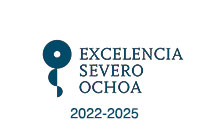 Eventos pasados: Juan Carlos Gómez-Esteban. Long-term neurological manifestations following SARS-CoV-2 infection
Eventos pasados: Juan Carlos Gómez-Esteban. Long-term neurological manifestations following SARS-CoV-2 infection
Juan Carlos Gómez-Esteban. Long-term neurological manifestations following SARS-CoV-2 infection
What: Long-term neurological manifestations following SARS-CoV-2 infection
Where: BCBL Auditorium and zoom room # 2 (If you would like to attend to this meeting reserve at info@bcbl.eu)
Who: Juan Carlos Gómez-Esteban, MD, PhD, Departamento de Neurociencias, UPV/EHU; Director of the Neurodegenerative Disease Group, Biocruces Research Institut, Bilbao, Spain
When: Tuesday, March 14th at 01:00 PM
Since March 2020 more than one million people in the Basque Country have been infected by the SARS-CoV-2 virus. Acute symptoms commonly include respiratory problems, with patients ranging from those with “mild” symptoms of infection of the upper respiratory tracts to severe symptoms such as respiratory distress or pneumonia, which worsen the prognosis.
Beyond these acute symptoms, approximately 10% of patients have been observed to develop a clinical profile that has been given various names, such as persistent COVID, NeuroCOVID, etc. The WHO has now defined such symptoms as "Post COVID-19 condition", which encompasses a clinical syndrome with over 300 symptoms, as stated in the different specialist and primary care guidelines.
Our group has been able to clinically study more than 100 patients with this syndrome, which is characterised by physical fatigue with the inability to carry out daily life activities. The syndrome is characterised by the presence of sustained attention deficits, reduced verbal fluency, and changes in executive function that are similar to those described in chronic fatigue syndrome. Patients also present dysautonomia and small fibre neuropathy, with symptoms such as dysesthesia, tachycardia, intestinal rhythm disruptions and orthostatic intolerance.
From an imaging perspective, although it is not a neurotropic virus, cortical areas have been observed to be affected in comparison with resonance imaging before infection. These pathways are interconnected with the rhinencephalon, which could be an entry point for the virus.
Further studies are needed to clarify the origin of the cognitive deficits and the main morphological findings in the brains of these patients. We have yet to determine the natural history of the disease and detect previous vulnerabilities that imply increased susceptibility in some patients with neurological diseases.








